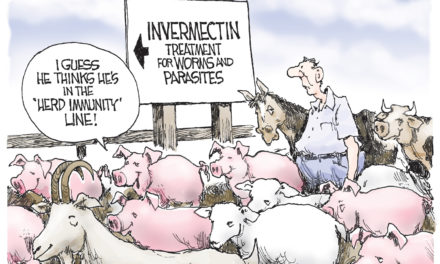
It looks like Memphis Area Transit Authority has finally reached a long awaited point: put up or shut up.
For years, MATA has offered up numerous justifications for the sad state of public transit in Memphis. At a time when efficient, effective mass transit is a competitive advantage for cities attracting talented workers, ours does just the opposite.
For many students and young workers who come here, MATA becomes a symbol for a city that just can’t seem to get its act together. And it’s not a bus that they take getting out of here fast.
We won’t repeat the reasons why we are so focused on 25-34 year-olds because you’ve probably memorized it by now, but suffice it to say that we are bleeding this crucial demographic.
That Giant Sucking Sound
In the decade between 1990 and 2000, Shelby County lost 14,205 25-34 year-olds, and that was troubling enough, but in the first six years of this decade, we lost 18,482. In these same periods, Memphis lost 6,814 and 14,508 respectively.
Said another way, from 1990 to 2006, Memphis lost 21,332 25-34 year-olds and Shelby County lost 32,687 (including Memphis). DeSoto County gained 11,146 of this demographic, so our area had a net loss of 25-34 year-olds of 21,541 people.
In other words, slightly more than three 25-34 year-olds have left Shelby County every day for the past 16 years.
Nashville Mayor Karl Dean said that improving mass transit is the top issue that he hears from young Nashville residents (and keep in mind that Nashville’s public transit includes trains while we’ve managed to have trolleys that pretend to be transportation). Mayor Dean said he plans to move assertively to leverage newly passed legislation about dedicated funding source for mass transit to attract more federal funding and to upgrade his city’s system.
The silence here is deafening.
Why It Matters
Operating with the attitude that public transit is for poor peoples with no other choices, MATA is a significant obstacle to the kind of progressive image (and more important, reality) that other cities like Nashville are using as a lure for talented workers.
Focus groups with college-educated workers here tell us that they expected a city of Memphis’ size to have a modern, welcoming, efficient public transit system. Instead, they complain that the recruiters’ promise of a lower cost of living was misleading because “no one told us we’d have to buy a car.”
For example, workers at St. Jude Children’s Research Hospital come from around the world. Researchers have lived in Paris, Boston and San Francisco. In other words, they know what a first-class transit system looks like. One relatively new arrival from Africa said she felt home at Memphis because so much of Memphis felt like a third world country – such as its bus system.
In previous years, MATA has suggested that it can’t attract more riders, and that was certainly born out by polling of the Sustainable Shelby project. It was widely predicted that climbing gas prices would force suburbanites out of their cars and back to city neighborhoods.
It never happened here and it’s not likely to unless something dramatic changes. Shelby Countians say gas prices would have to be $6.69 before they’d get aboard a city bus.
Getting It Right
The fact that gas prices will have to increase at least 50 percent for MATA to start looking attractive says as much about the transit system’s reputation as it does about Shelby Countians’ concern for their carbon footprints. It also indicates that the record public transit ridership that is occurring across the U.S. won’t happen here.
The poll results are backed up anecdotally by Leadership Memphis’ regular experiment requiring its members to travel to a class day using public transportation. The experience is always an eye-opener, because most of the class members are among the 92 percent of Shelby Countians who don’t travel in MATA. Comments from Leadership Memphis fall into broad categories like the need for better customer service for MATA and cleaner, better-maintained buses.
Meanwhile, Atlanta has upgraded the comfort of its seats and now loads news, sports scores and weather reports into televisions on its buses when they leave the bus barn. Utah and Colorado have added Wi-Fi to longer commuter buses for $5,000 and report that it has produced added ridership. Meanwhile, the buses have reclining seats, cup holders and racks for briefcases, backpacks and bicycles.
A number of cities like Portland, Oregon, send alerts to passengers’ Blackberries, offering up-to-the-minute information about trouble spots and alternatives in the event of problems on the route.
Doing More Than The Expected
All of this sounds light years away for MATA, but two recent developments might change all that…or at least prove once and for all if MATA is competent and capable to deliver a high-quality public service.
MATA is currently drawing up its plans to update its regional transit master plan, which in the past had often been merely updating the previous plan. If the current system is the answer, then it’s clear someone at MATA has been asking the wrong questions with its previous master plans.
This time around, there is a growing interest at the Memphis Area Planning Organization (MPO) to do more than the expected and the perfunctory. Over the years, MATA has repeated that the Memphis region can’t afford a first-class transit system.
Here’s the problem: they’ve never told us what a modern 21st century system would look like and what it would cost. The transit authority might be surprised: it might be exactly what we want and we might be willing to pay for it.
No More Excuses
Meanwhile, the other – and more on target – explanation given by MATA is that it doesn’t have a “dedicated funding source” like many other transit companies. It is this dependable source that has been pivotal to other cities far superior systems.
Just two days ago, when told rightly by City Council member Wanda Halbert that “it shouldn’t talk an hour to get from a certain point to downtown, MATA president Will Hudson told the City Council Budget Committee: “I’m not being smart. A lot of cities have a dedicated funding source that allows them to do that..They beat up on us all the time. It’s not about we don’t know how to run a transit system…If I had the money…”
While we think his contention that the current management has the ability to manage an effective transit system is arguable, we assume that he knows that quietly, the current legislature unanimously passed a law to approve a dedicated funding source for public transit.
It’s encouraging that finally someone in Nashville understood that transportation is about more than just about building more highways. Public transit advocates across Tennessee hailed passage as a historic step toward improved mass transit in the four metro areas of Tennessee, and said it was the first step toward a toolbox for a modern public transit system.
Just Do It
The law allows for our area to create the dedicated funding source for a Regional Transportation Authority.
Perhaps, just perhaps, it begins a “no excuses” era for MATA and ushers in the opportunity for the MPO to think more boldly and broadly about the future of public transit in our community.
It proves conclusively that hope springs eternal.





It’s easy to see the direct benefits between a consolidated local government and a dedicated funding source for transit. You might even say all of these issues represent a referendum on the concept of regionalism itself. It will be a tough sale, but if MATA can truly reinvent its service patterns and technology base, it might be an easier sale for the local citizenry’s apathy toward a more efficient transit system.
If we are 5 years into implementing bike lanes (and more than a decade behind many peer cities), I wonder how long it would take to implement bus lanes on certain local thoroughfares?
One last thing and I will be quiet- it will be interesting to see the new regional transit plan. One aspect we failed to mention in the discussion concerning the erosion of downtown as the central business district is the impact it has on the ability to provide an efficient transit system. Effective transit systems are based in part on the idea that a significant portion of the population shares a point of origin and/or shares a destination point. A general rule of thumb is ridership decreases dramatically once you go beyond a “5-minute walk” or roughly ¼ mile radius. It basically disappears once you go beyond a ½ mile radius. Another major factor is the issue of transfers (and the time required by them). These tend to become slightly irritating if more than 2 transfers occur and start to deter riders if more than 3 are required to arrive at one’s destination.
Several major developments that might be considered part of the Poplar Corridor are on the edge if not beyond a ¼ mile radius of Poplar itself. The new plan will also need deal with the difficulty of providing transit for a population that is so heavily dependent on warehouse activities.
Of course, not all of these issues are totally MATA’s fault. Even once MATA serves an area, there has to be a network of sidewalks and blocks to allow employees to actually reach their destination. Such a system hardly exists in several areas including the Airport industrial area and a regular block pattern is absent along much of the Polar Corridor.
I wonder who they comtracted with to help them focus when creating this plan. I hope not “nobody but themselves” and I also hope it’s not ANY of the usual suspects.
I like to have people who can say, You do this, and it will generate this, and serve this, and added benefits of this, etc. and then it happens exactly as they say, repeatedly.
I don’t like guesswork consultants.
Brian,
A reply to the RFP was required by December 15, 2009. I’m not sure if it what the results were. If you go to their website- http://www.matatransit.com/ – highlight the “Projects and Plans” tab below the header then scroll to the bottom and highlight the “Transit Master Plan” label. Another short list will appear and you can select the “Transit Master Plan Mailing List” option which will pull up the list of firms that received the RFP. It will not tell us who will be working on the project, but it at least gives an idea of the breadth and depth of the group.
Thanks for that, Urbanaut.